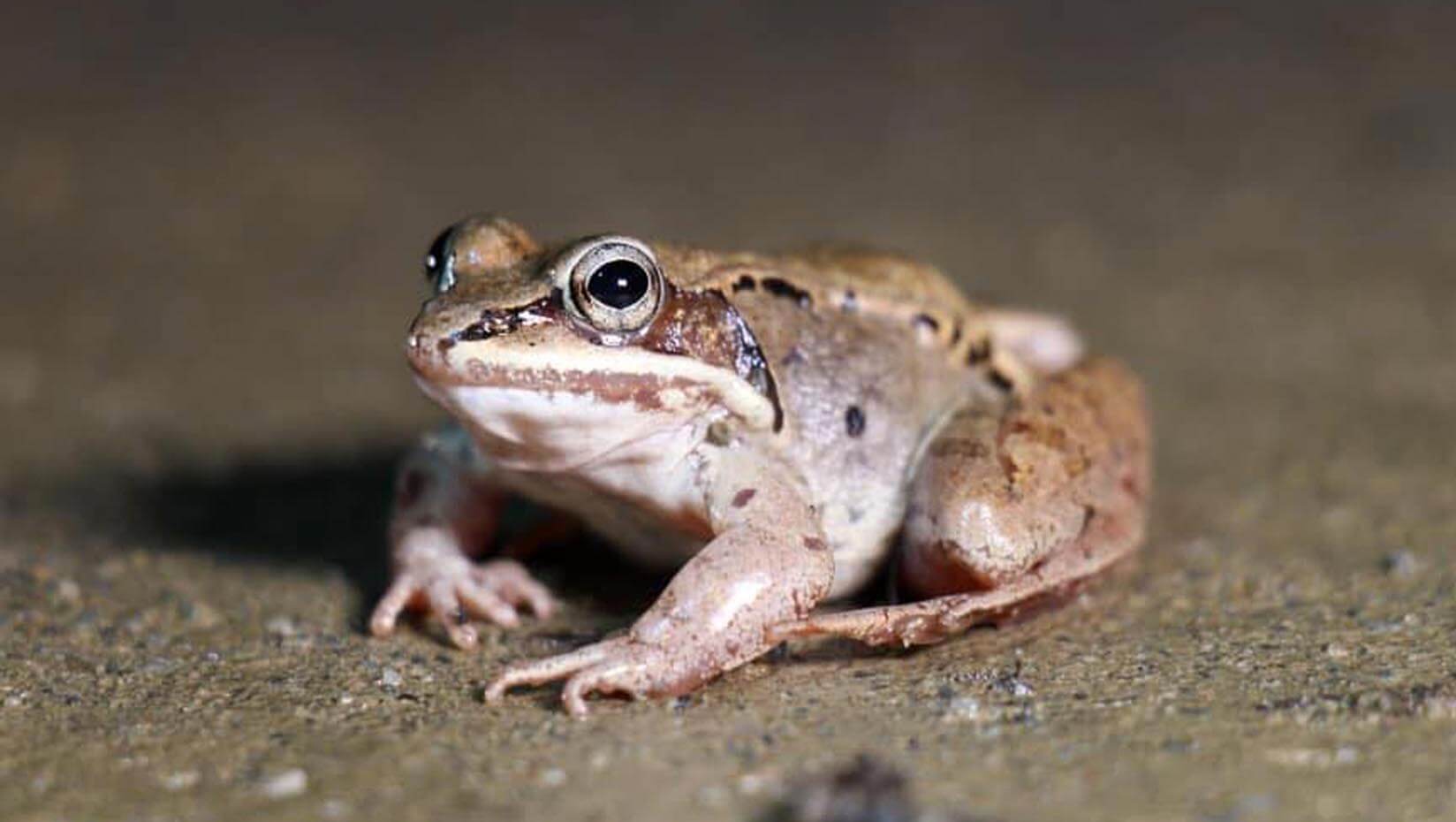Fewer frogs died by vehicles at start of pandemic, study finds – UMaine News
[ad_1]
Wood frogPhoto by Greg LeClair
Fewer frogs have died from vehicle collisions in the spring of 2020, when the COVID-19 pandemic began, than in the season of other years, according to a new study by a graduate student at the University of Maine and community science project coordinator.
Vehicles kill many frogs, salamanders and other adult amphibians that cross the roads, especially on their spring migrations. When traffic levels plummeted in the first few months of the pandemic, Greg LeClair decided to investigate how this slowdown in human activity would affect amphibian mortality.
LeClair, a master’s student in Ecology and Environmental Sciences at UMaine, used the data he accumulated by organizing the annual Spring Community Science Project he founded called Maine Big Night: Amphibian Migration Monitoring. . Volunteers participating in the effort are collecting data on frogs and salamanders crossing roads at sites in Maine from March 15 to May 15.

The team found that 50% fewer frogs died from vehicle crashes in spring 2020 in Maine than during the same periods in 2018, 2019 and 2021. Comparing them to collision data for other species in the Maine Department of Transportation, researchers identified a wider decline in animal deaths on roads in spring 2020 in the state, a similar result has been shown in other studies around the world.
Zach Wood, postdoctoral research associate at UMaine’s School of Biology and Ecology; Matthew Chatfield, assistant professor of evolution and eco-health at UMaine; Jeffrey Parmelee, evolutionary biologist and ecologist at the University of New England; and Cheryl Frederick, an animal behaviorist with the Center for Wildlife Studies, all participated in the study. They published their findings in the journal Conservation science and practice.
“A significant impact on wildlife is within the grasp of most people; just try not to drive on the hot, rainy spring nights, â€says LeClair.
While the frequency of frog deaths from vehicles declined significantly in the first few months of the pandemic, no noticeable changes were observed in road mortality among salamanders.
Researchers believe the deviation may involve precipitation, as salamanders typically travel less under precipitation, while frogs are unaffected or increase their movements. According to researchers, more frogs than salamanders died from vehicle crashes statewide from 2018 to 2021, especially in warmer and wetter weather.
The Maine Big Night Project not only supports research like this latest study, but serves to monitor amphibian populations and identify places where many are killed in vehicle crashes. Participants also help escort live frogs and salamanders across the road to reduce fatalities.
According to LeClair, 426 certified volunteers, including 149 providing data as the primary emitter, have surveyed 199 sites in Maine since 2018 as part of The Maine Big Night. His project gained national attention, with articles about it published in the New York Times and The Atlantic.
“I’ve taken frogs and salamanders off the road since I was a kid,†says LeClair, “I hope this work will help mend these ecological wounds.
Contact: Marcus Wolf, 207.581.3721; [email protected]
[ad_2]

